Types of crocus: 12 spring-flowering bulbs to brighten pots, lawns, and borders
We've rounded up our top types of crocus for bringing spring cheer to the garden
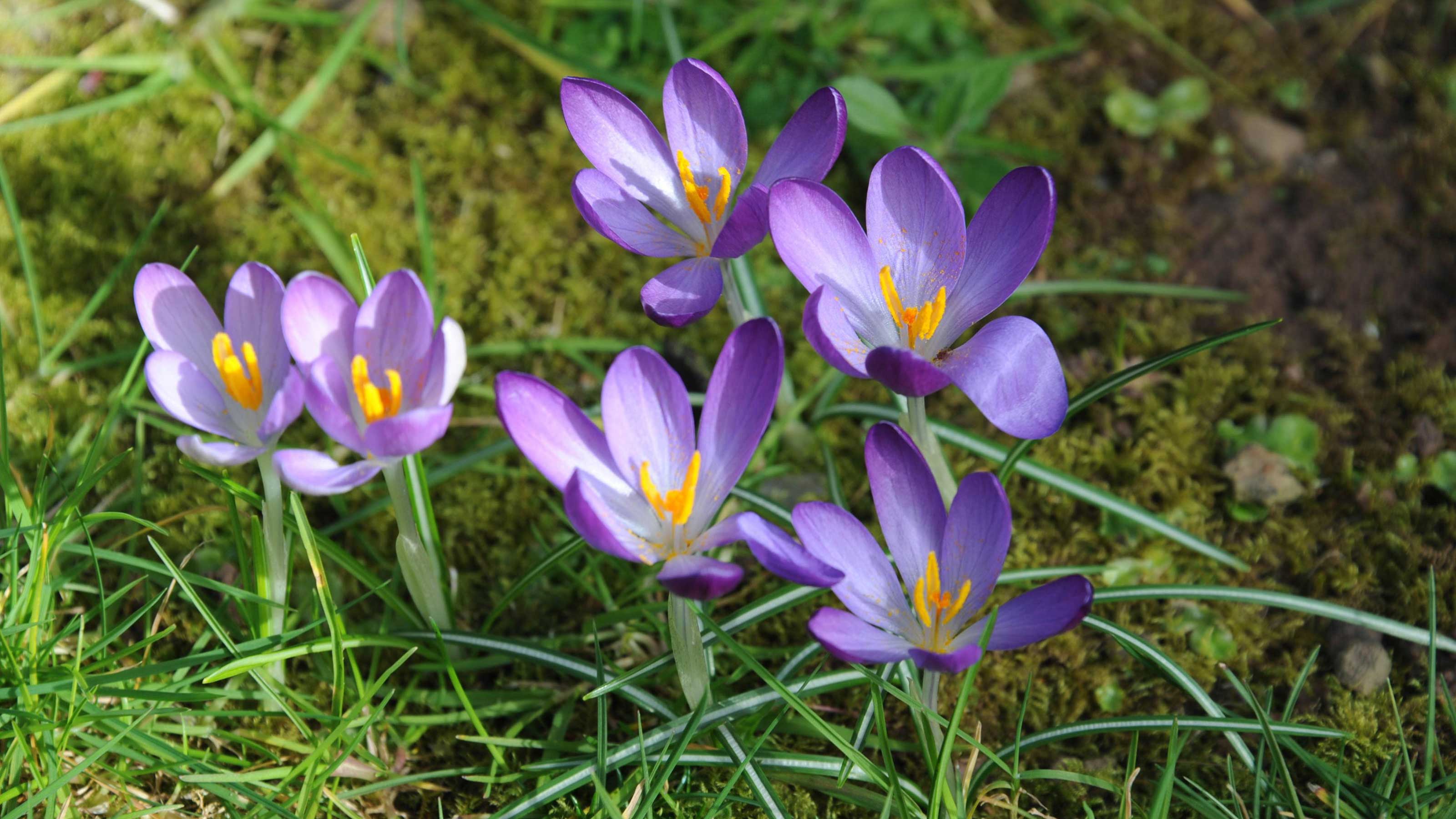

We can always make room for one or two types of crocus – they are great for planting in lawns, borders, containers, or under trees and shrubs, and are guaranteed to bring a burst of welcome color at the end of winter.
The earliest-flowering crocuses come into bloom from late winter onwards, making both the perfect accompaniment and successor for other early flowers, such as snowdrops, daffodils and anemones. And, once you've planted these bulbs in the ground, they will naturalize, so you can watch your crocus collection multiply and spread each year.
There are many species and cultivars to choose from that originate from a wide geographical area, but most crocuses require well-drained soil and sunlight – Avon Bulbs recommends at least half a day in full sun. A few types, such as the Tuscan varieties, are better for damper soil and can cope with some shade.
Typical crocus colors range from white through to yellow, purple and orange, and these look pretty and jewel-like all mixed up together. But for a spring wow-factor, they really need to be planted densely and in quantity – whether it’s a bowlful of a striking single-colored crocus for a table display or a carpet of crocuses coming through the lawn.
Our top 12 types of crocus for the spring garden
Plant crocus bulbs in fall and you'll have a beautiful display come spring.
1. Crocus vernus ‘Yellow mammoth’
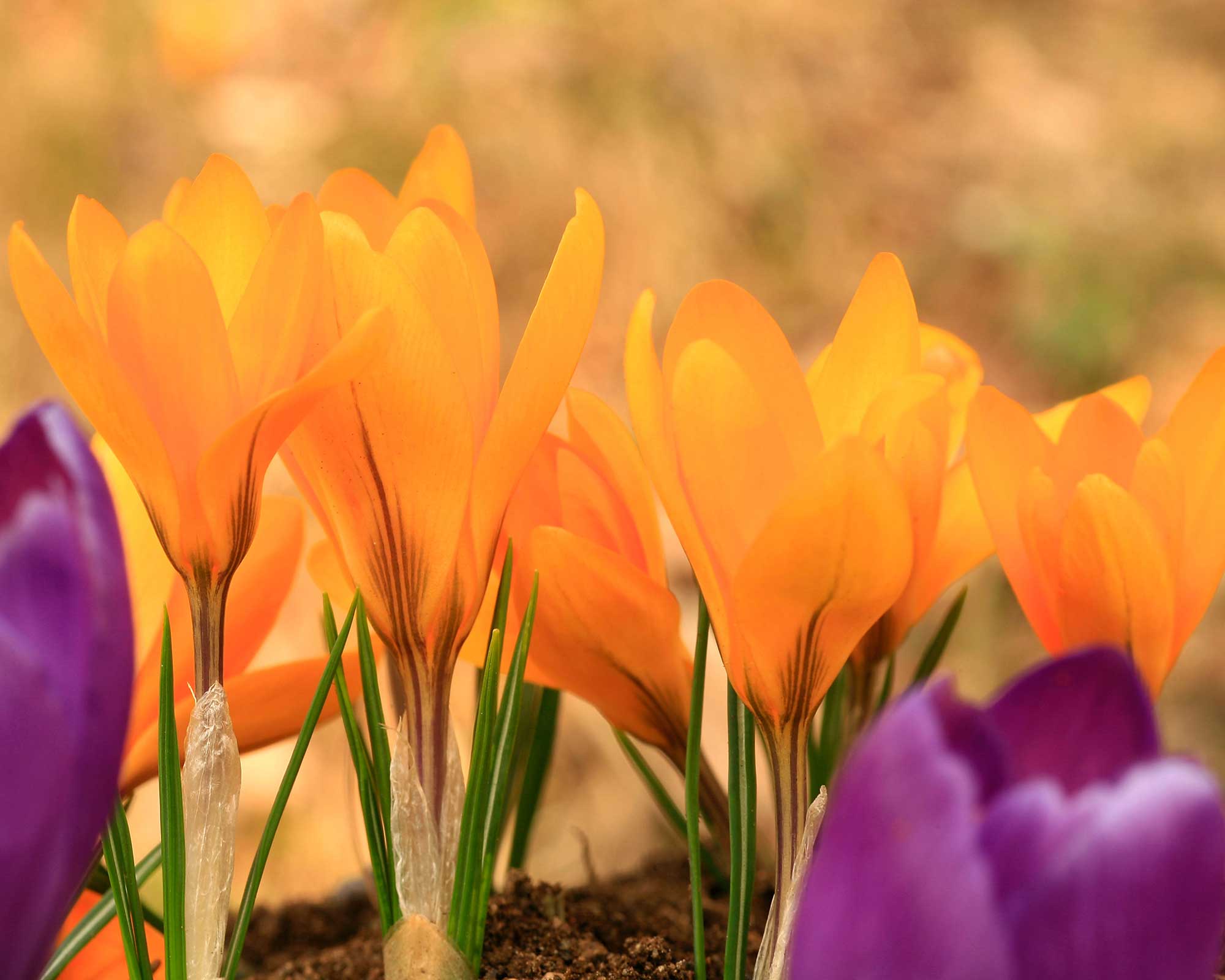
- Height: 4-6in (15cm)
- Hardiness: USDA 3-8 (UK H4)
This golden-yellow Dutch crocus is great for a front-of-border spot, grouped under shrubs or smaller trees, or spreading through meadowy lawn edges.
Larger than many of the species crocus, this will bring a brilliant, zesty splash of color to the spring garden. Once planted, leave it to multiply and naturalize, or for an early treat, try forcing the bulbs indoors for table displays.
- Shop Crocus vernus 'Yellow mammoth' in the US: view at Nature Hills
- Shop Crocus vernus 'Yellow mammoth' in the UK: view at Suttons
2. Crocus vernus ‘Jeanne d’arc’
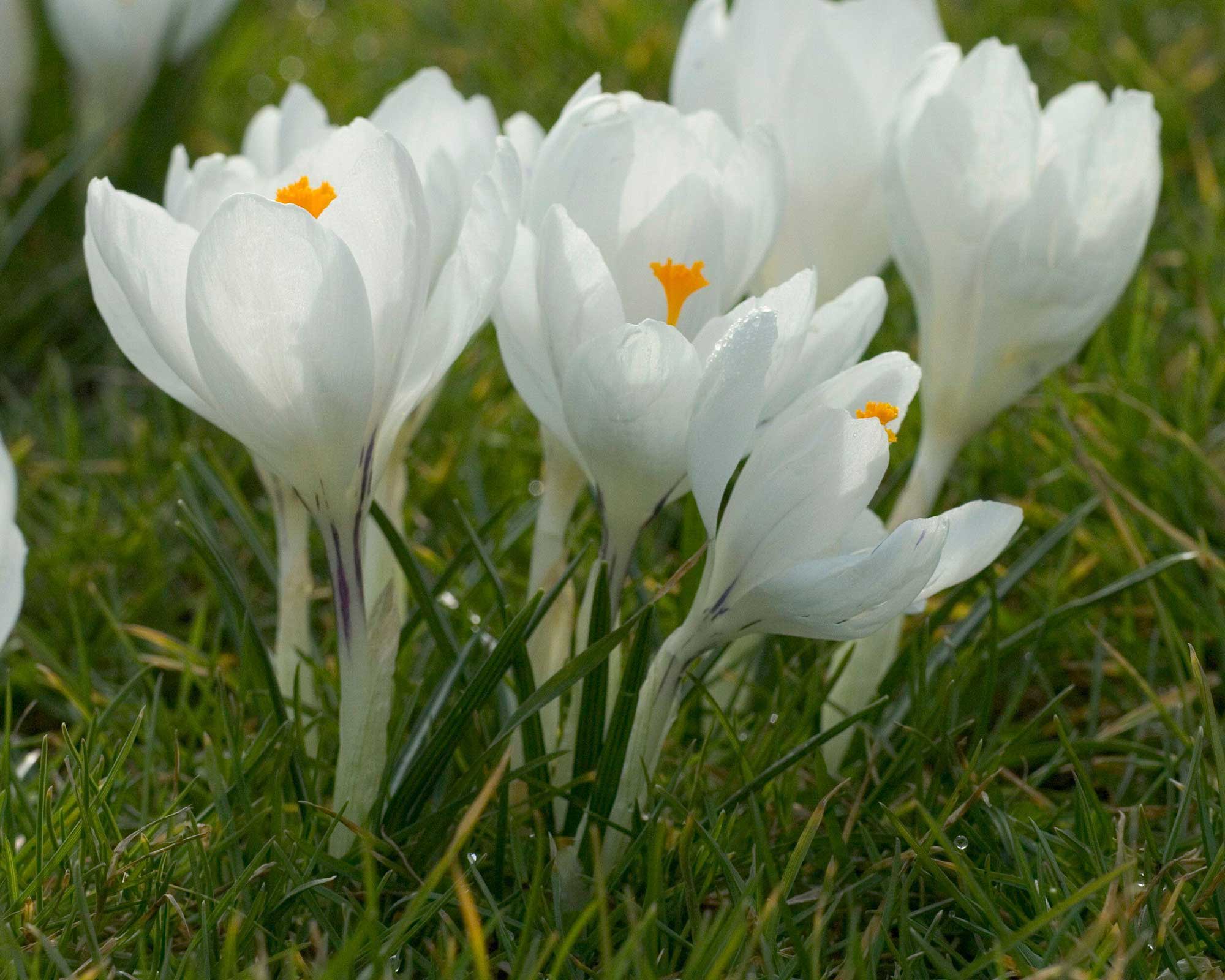
- Height: 4-6in (10-15cm)
- Hardiness: USDA 3-8 (UK H4)
One of the so-called Dutch hybrids, this is the largest white-flowering crocus, with blooms appearing from late winter onwards.
It has the faintest of purple veining at the base of the pure white flowers, and makes a stunning display on its own, or among the emerging leaves of later-flowering bulbs.
It’s good for naturalizing and you can plant these a little bit deeper to deter the mice and squirrels from digging up the bulbs.
- Shop Crocus vernus ‘Jeanne d’arc’ in the US: view at Nature Hills
- Shop Crocus vernus ‘Jeanne d’arc’ in the UK: view at Crocus
3. Crocus tommasinianus ‘Barrs Purple’
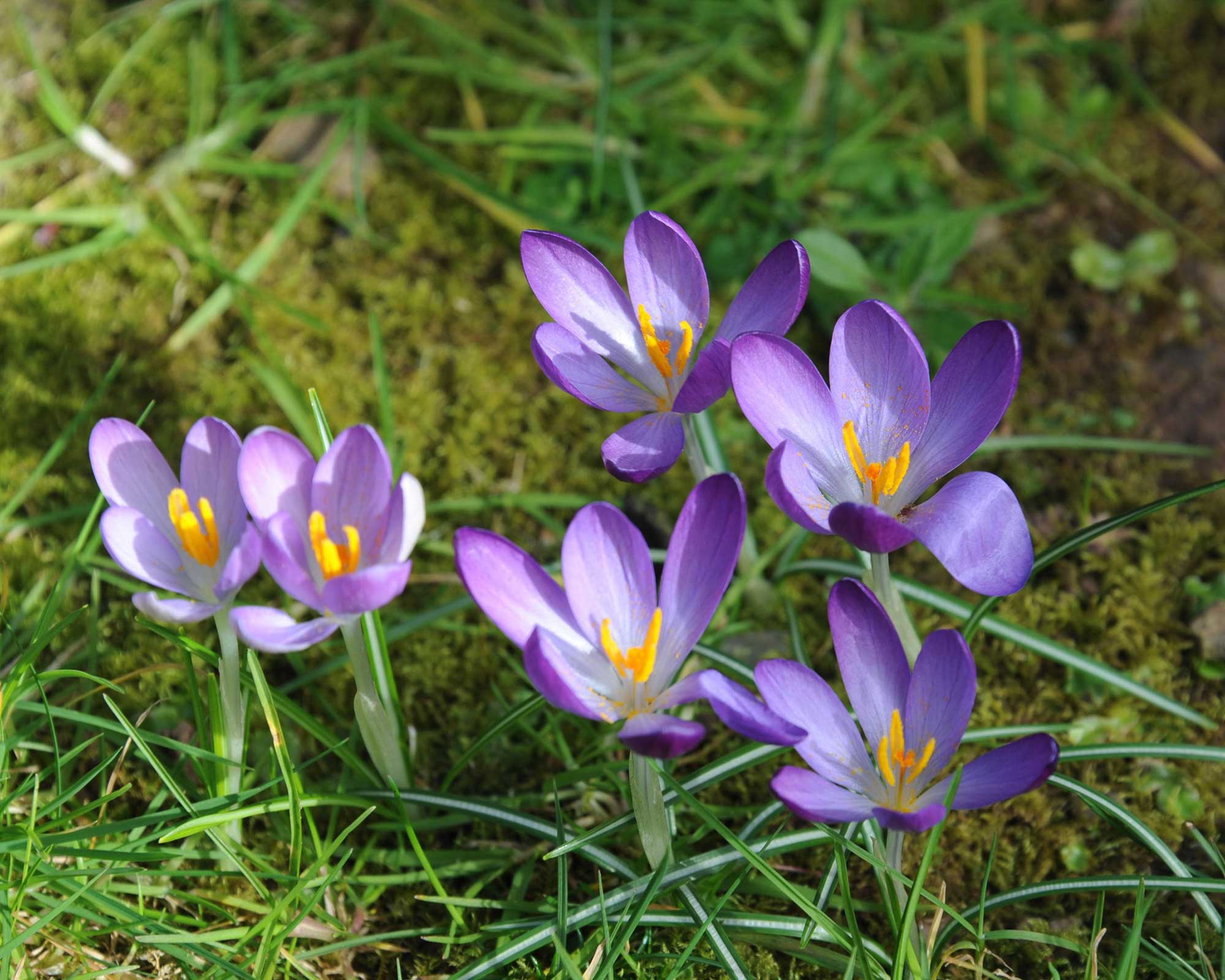
- Height: 4in (10cm)
- Hardiness: USDA 3-8 (UK H4)
This crocus is a lovely bright shade of purple and really comes into its own when it opens up in the spring sunshine. The light mauve petals have a satiny sheen that gives an added elegance to these classic goblet-shaped flowers.
Being a ‘tommie’, this is a reliable returner and good for naturalizing in grass.
4. Crocus x luteus ‘Golden yellow’
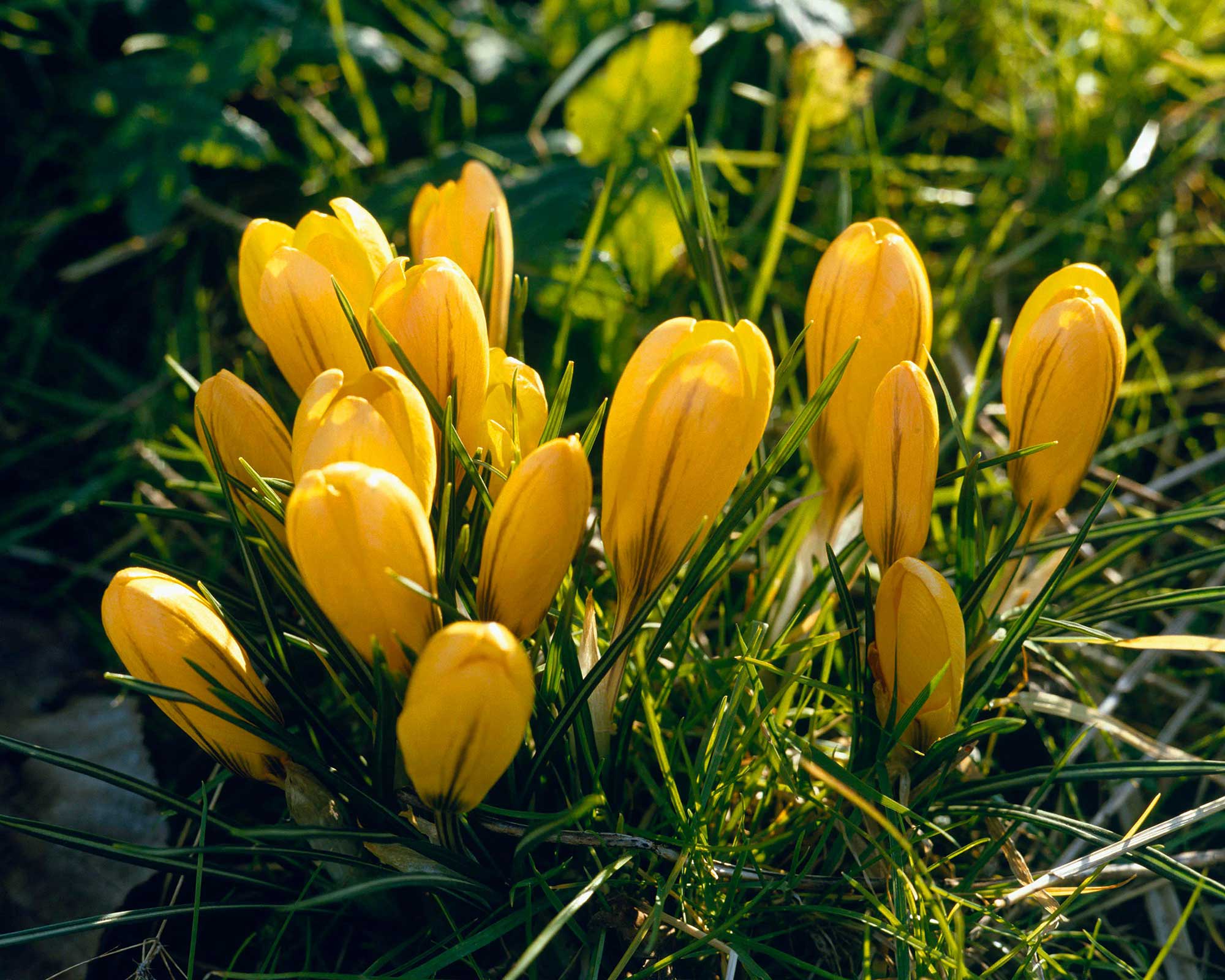
- Height: 4-6in (10-15cm)
- Hardiness: USDA 3-8 (UK H4)
This vigorous hybrid will bring joy to late winter days with its dark, almost orangey-yellow flowers, decorated with a dark maroon strip.
It looks great planted in borders, as long as the soil is well drained – add grit to prepare the planting area and it will naturalize over time. It has an RHS Award of Garden Merit to recommend it.
5. Crocus etruscus ‘Zwanenburg’
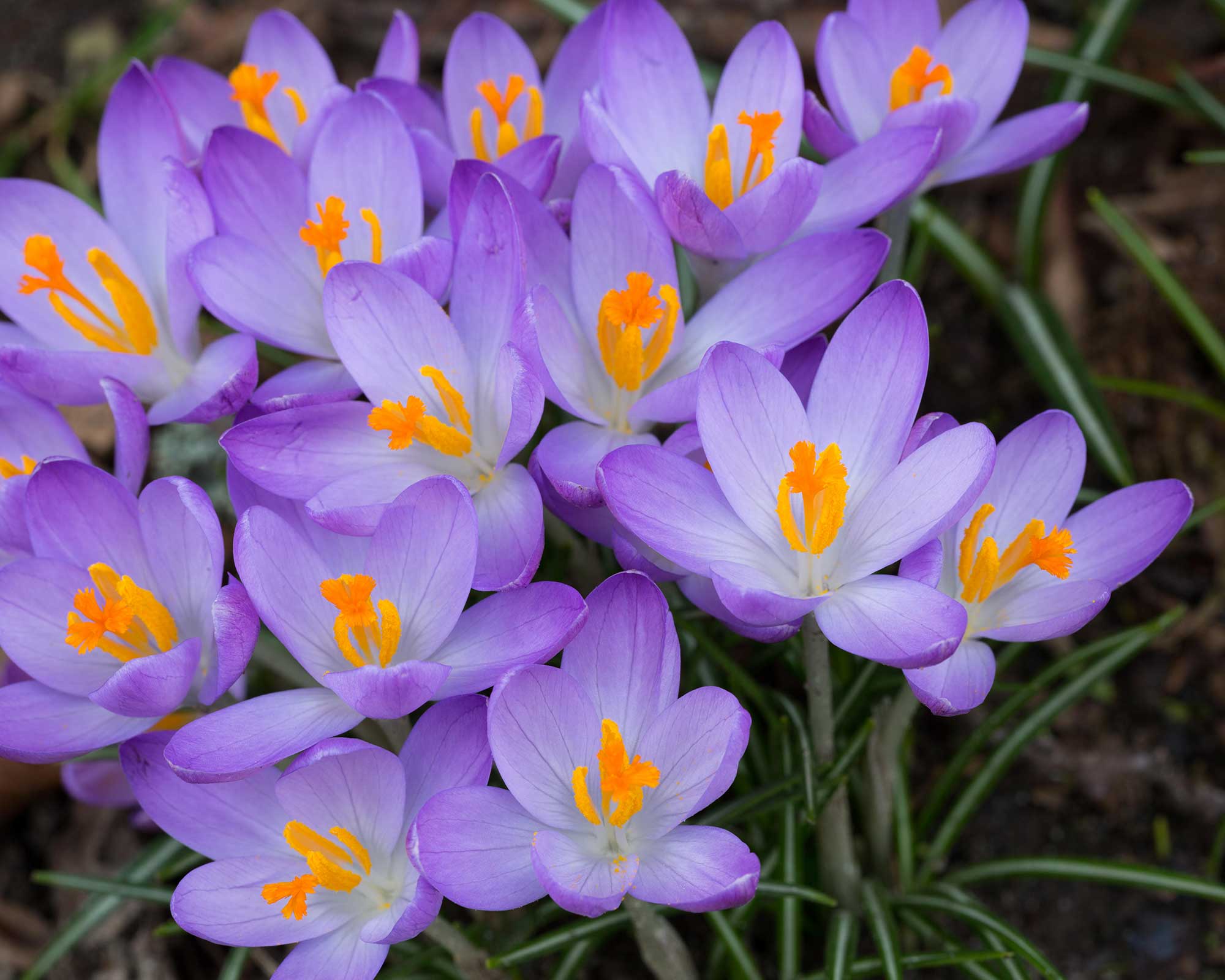
- Height: 4in (10cm)
- Hardiness: USDA 6a-8b (UK H4)
With pale lilac-blue purple flowers, this is a Northern Italian crocus that will happily naturalize and looks good at the front of a border.
With larger, open blooms, these also look good as plants under trees or shrubs. It's another winner of the Royal Horticultural Society Award of Garden Merit.
6. Crocus chrysanthus ‘Snow bunting’
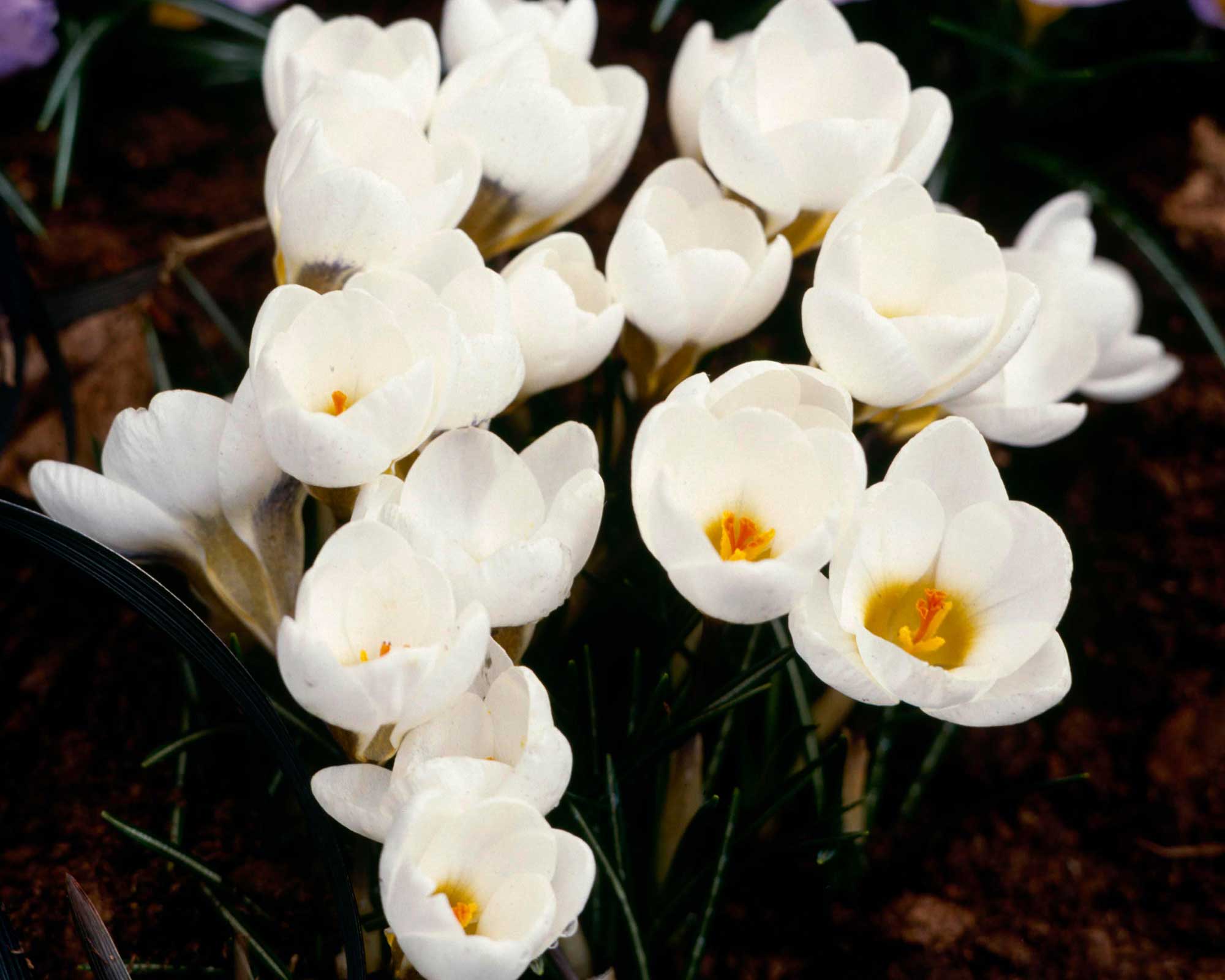
- Height: 4in (10cm)
- Hardiness: USDA 3-8 (UK H4)
A brilliant white crocus, this heirloom bulb is a classic choice for naturalizing in grass.
Plant en masse for a vivid and elegant display in early spring. The best way to plant them into a lawn is to peel back an area of turf and scatter the corms, letting them fall naturally, then roll the turf back over.
For all naturalized crocuses, don’t mow your lawn until the foliage has died back, as this will allow the corms to establish and eventually multiply in subsequent years.
7. Crocus chrysanthus ‘Dorothy’
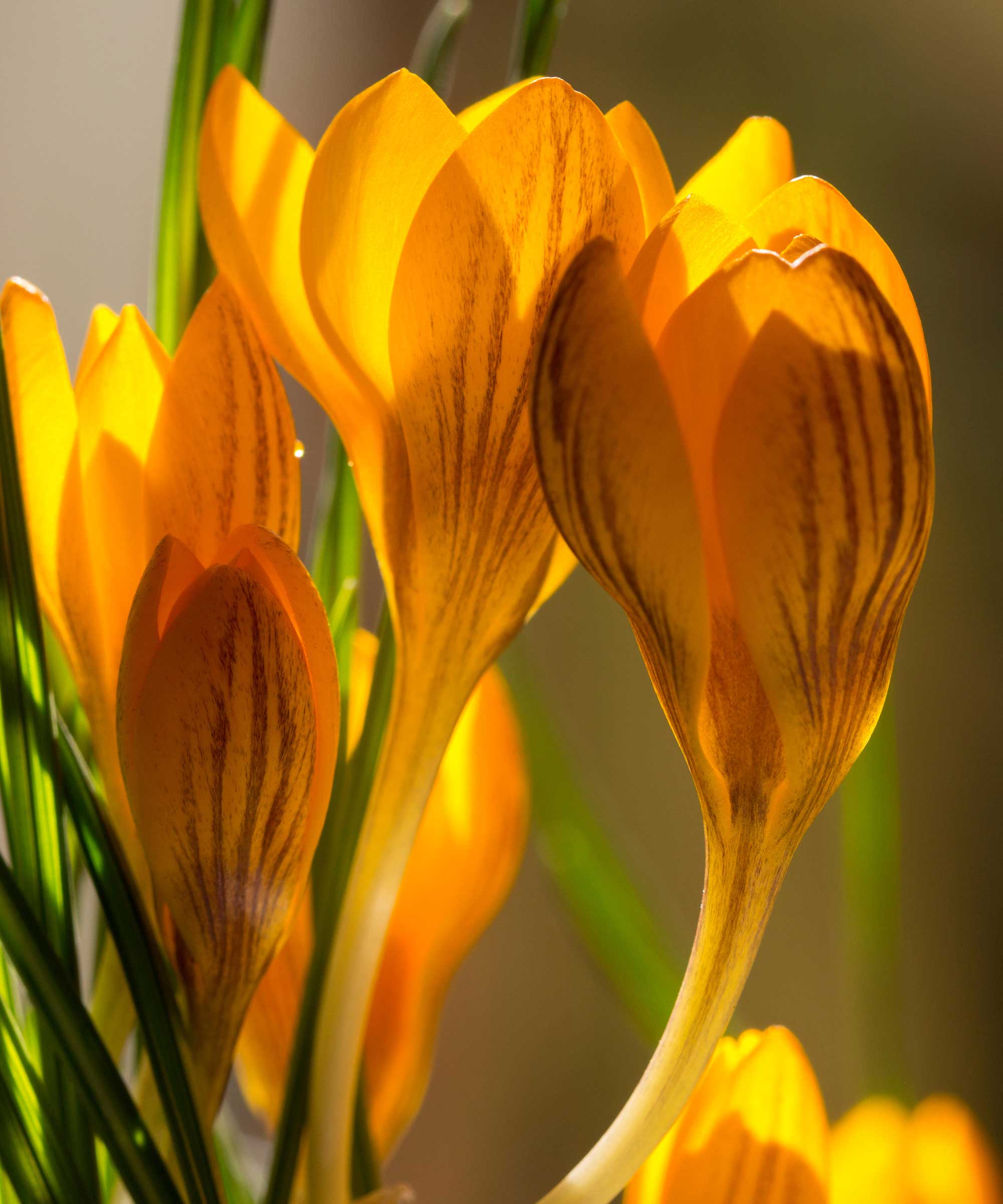
- Height: 4-6in (10-15cm)
- Hardiness: USDA 3-8 (UK H4)
This really does bring a ray of spring sunshine into the garden when the light yellow blooms first put on an appearance in late winter. A more petite and subtle yellow crocus than the vernus, this is bred from Crocus chrysanthus, that is also known as the snow crocus or golden crocus.
Originating from the Balkans, C. chrysanthus likes sharp drainage. This cultivar will naturalize successfully in borders and under shrubs.
8. Crocus vernus ‘Pickwick’
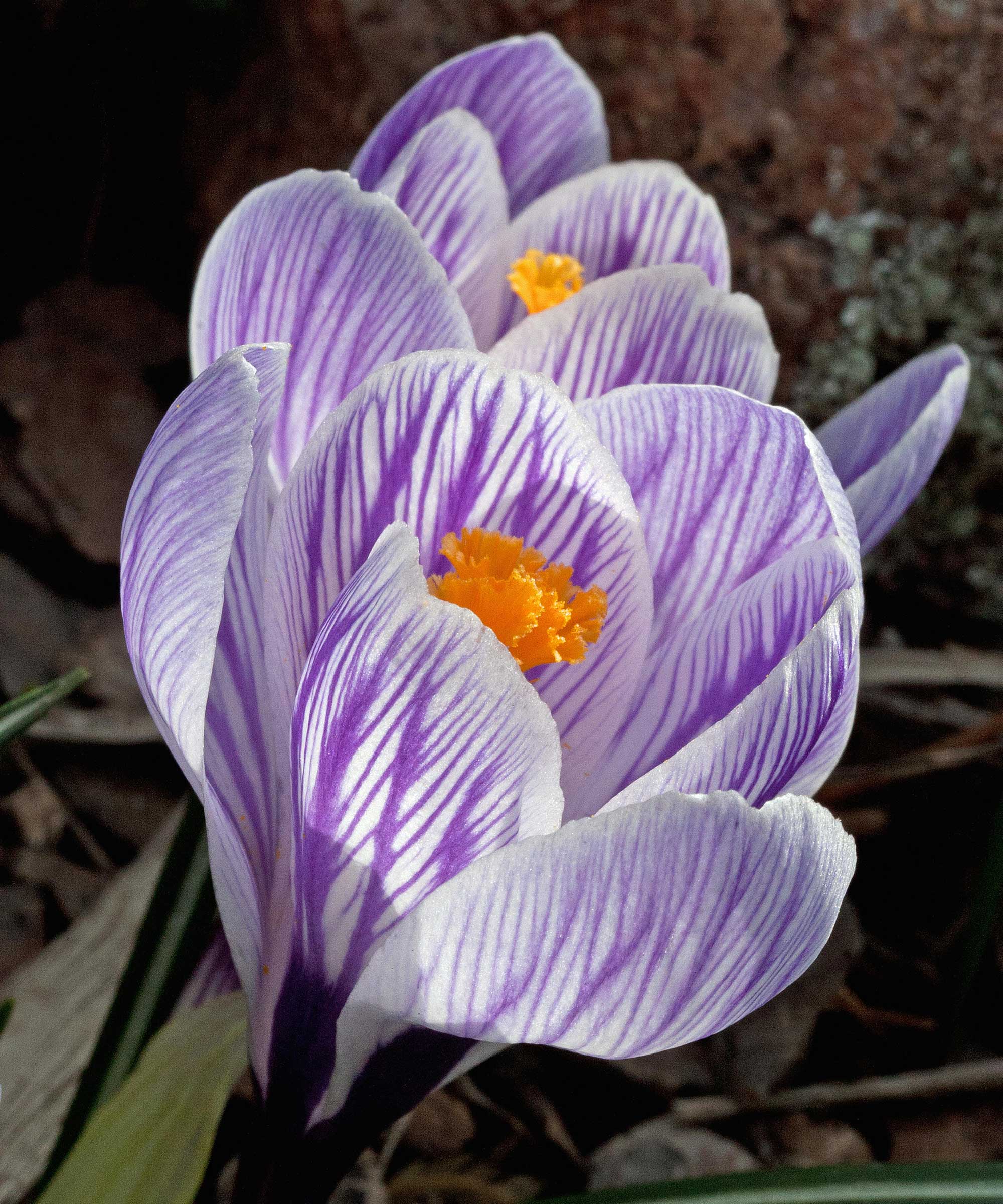
- Height: 5in (12cm)
- Hardiness: USDA 3-8 (UK H4)
With beautiful purple veining, this Dutch hybrid has become a classic spring bulb to plant.
The slightly larger corms produce a few flowers each and can be planted deeper which helps protect them against pilfering squirrels. It looks good planted en masse, or among other darker or white varieties of crocus.
This has a slightly later and longer flowering season.
- Shop Crocus vernus ‘Pickwick’ in the US: view at Nature Hills
- Shop Crocus vernus ‘Pickwick’ in the UK: view at Crocus
9. Crocus tommasinianus ‘Lilac Beauty’
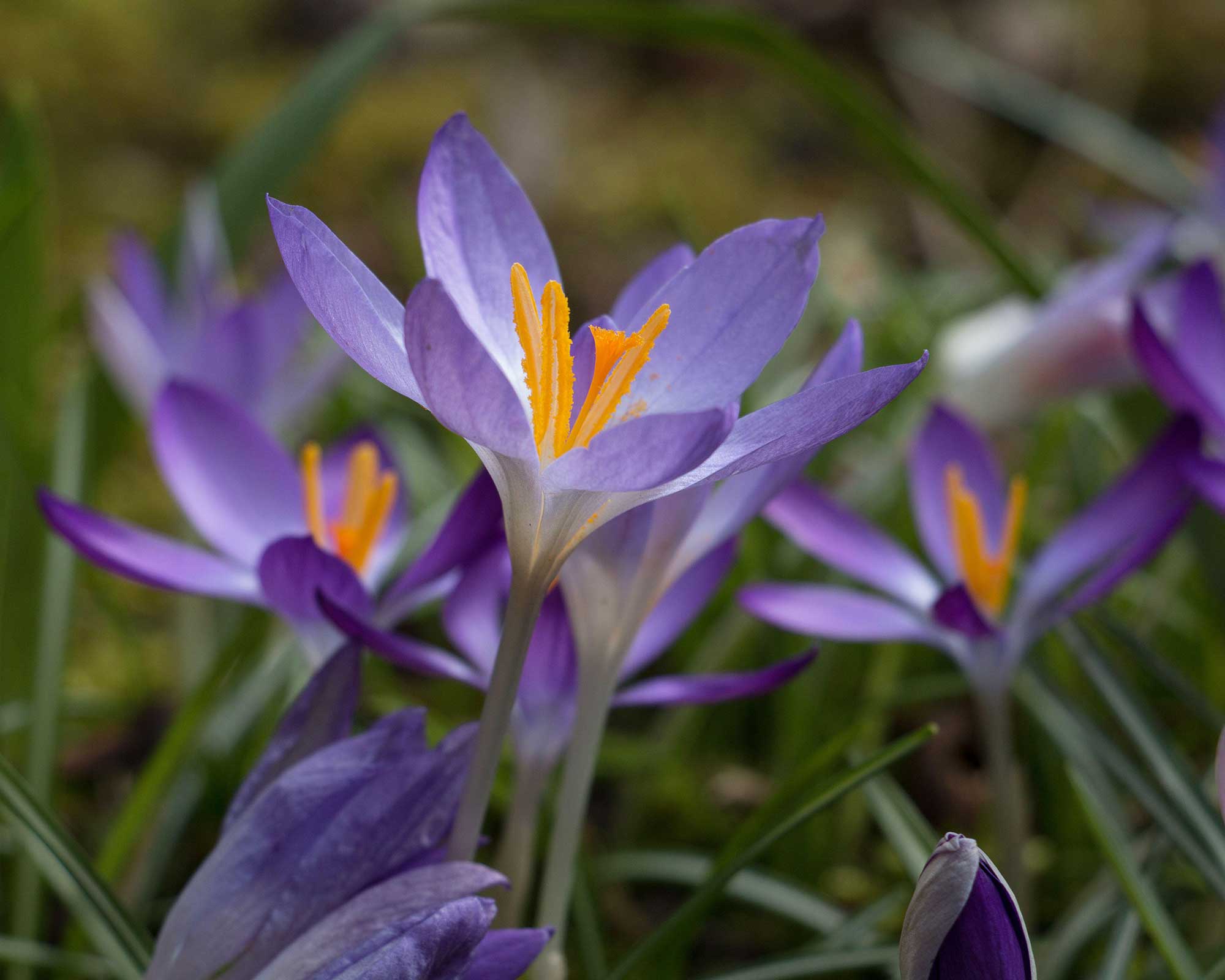
- Height: 4in (10cm)
- Hardiness: USDA 3-8 (UK H4)
This is another early-flowering tommie with very pale purple petals and brilliant orange stamens at the center of the fluted blooms.
It naturally looks great mingling with other small, early-flowering spring bulbs, and looks particularly lovely planted with a mix of snowdrops and winter aconites in pots or borders.
10. Crocus chrysanthus ‘Ard Schenk’
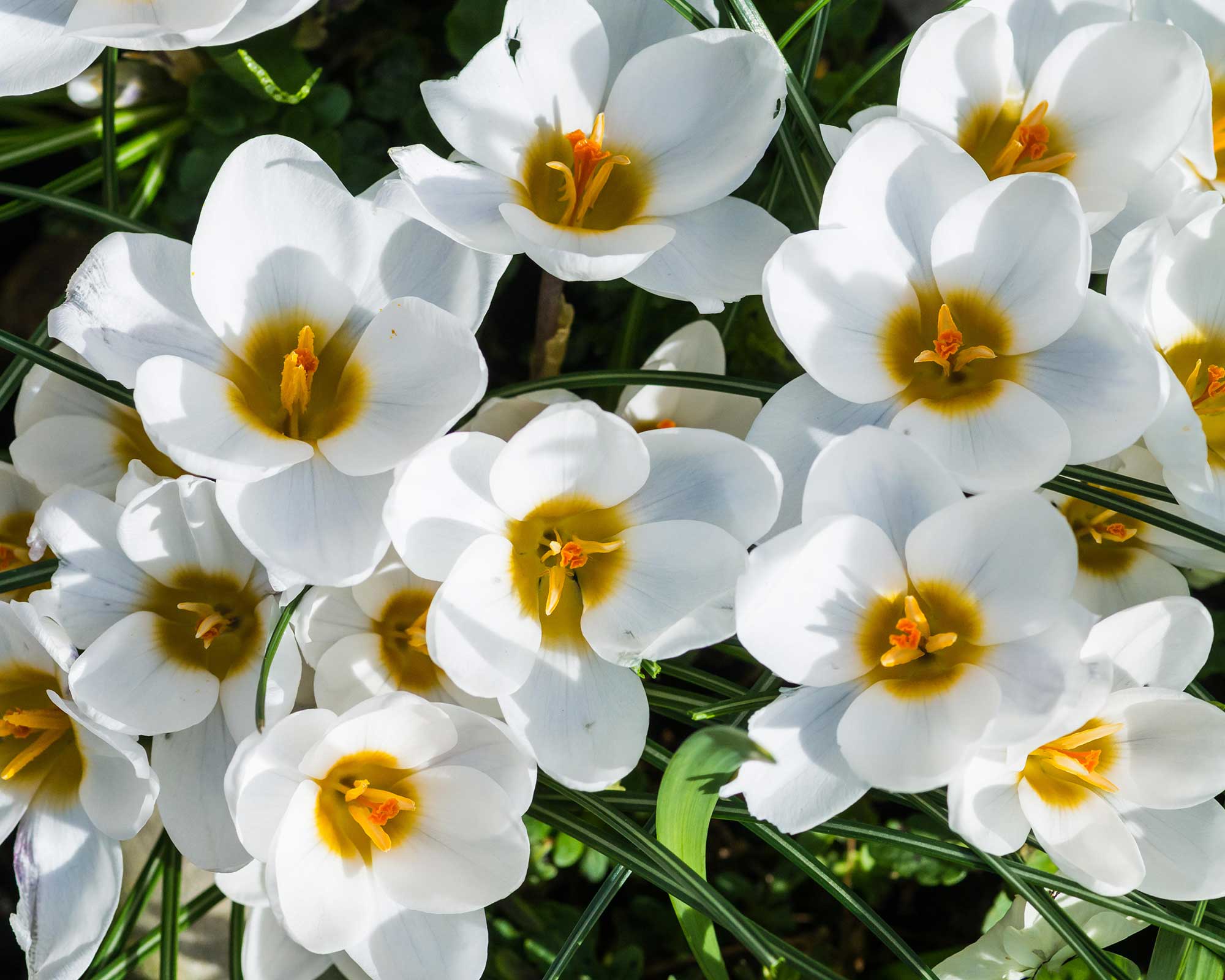
- Height: 3in (7.5cm)
- Hardiness: USDA 3-8 (UK H4)
These white flowers have a splash of brilliant yellow at the heart that adds to the glow. These look fantastic planted in full spring sun.
Plant the bulbs in groups of two or three, about 3-4in (8-10cm) deep in gritty, well-drained soil. You can use a layer of chicken wire or mesh under the soil to protect them from pests.
11. Crocus tommasinianus ‘Yalta’
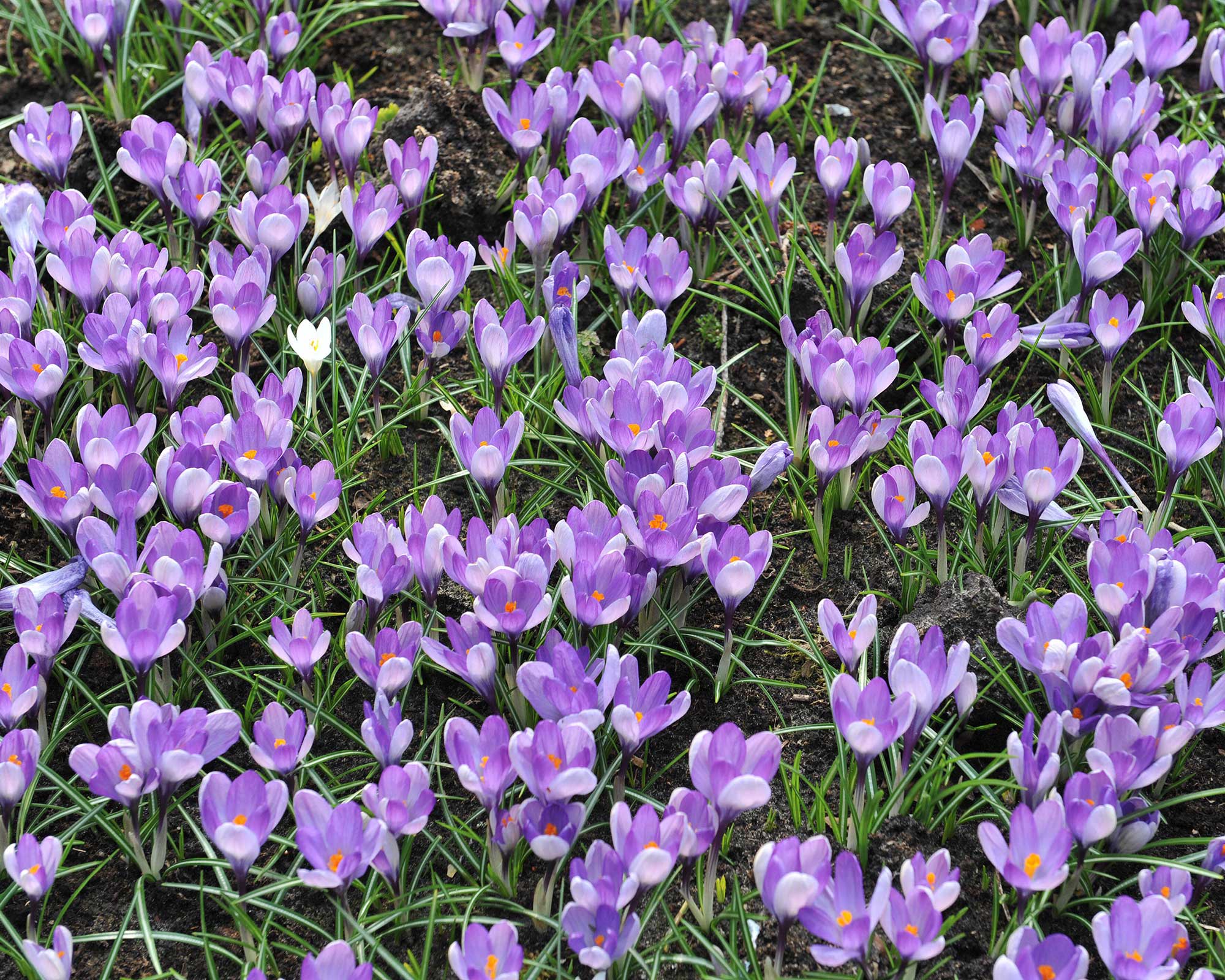
- Height: 4-6in (5-10cm)
- Hardiness: USDA 3-8 (UK H4)
A striking yet subtle two-tone crocus, with pale outer petals and a deep purple center, this hybrid tommie is one of the larger crocus flowers for early spring.
Easy to grow, it looks fantastic naturalized in grass or at the front of borders.
12. Crocus oliveri ‘Orange monarch’
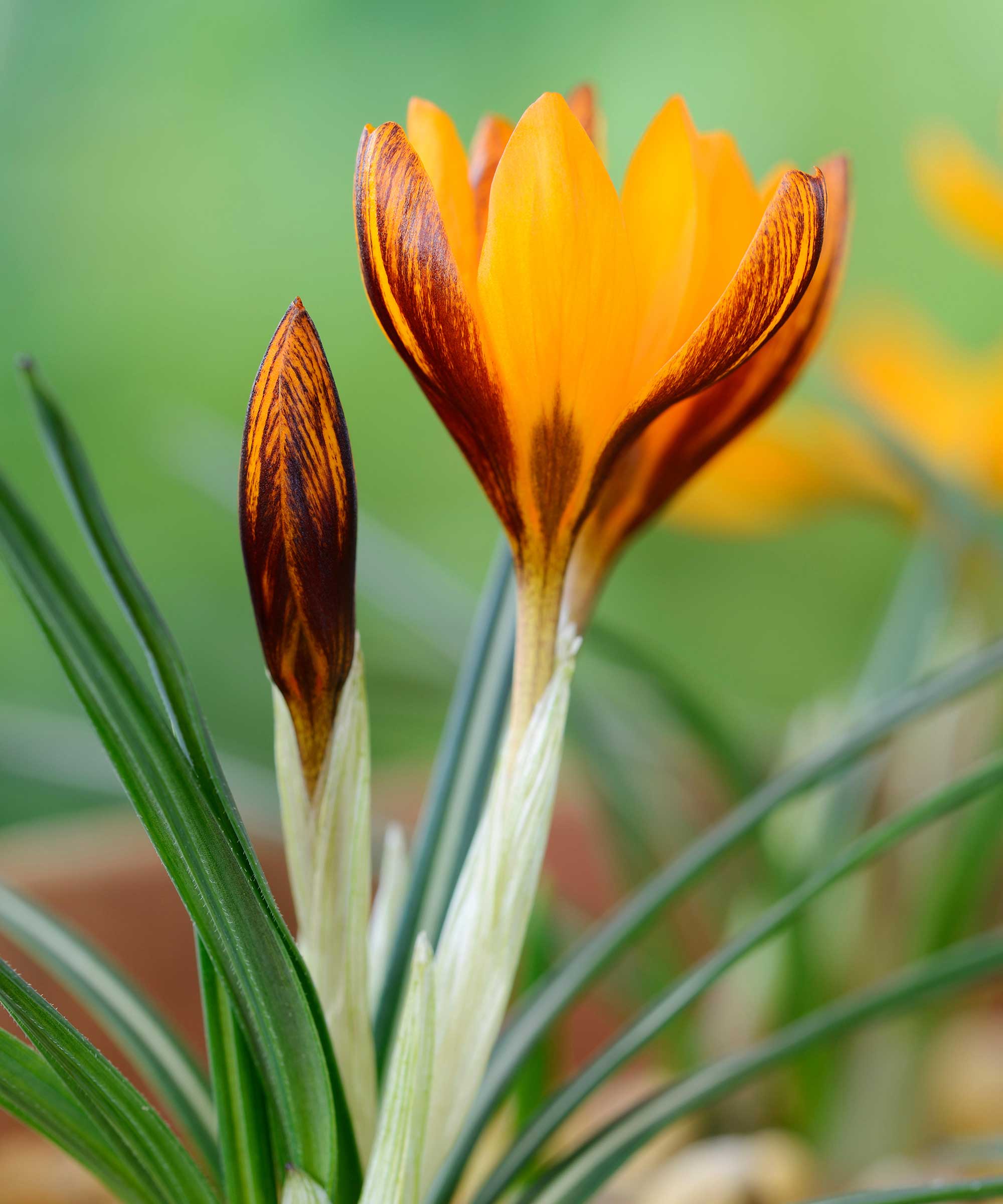
- Height: 2-4in (5-10cm)
- Hardiness: USDA 3-8 (UK H4)
With tiger-bright orange petals veined in purple-black, this color combination reflects the coloring of the butterfly it’s named after and is the first true orange crocus to be bred.
Blooming very early in spring, this is good as a solo planting for spring container displays, or for the top layer of a bulb lasagne – but plant these corms densely as the flowers are slender.
- Buy Crocus oliveri ‘Orange monarch’ in the US: view at Dutch Grown
- Buy Crocus oliveri ‘Orange monarch’ in the UK: view at Dutch Grown
What types of crocus are autumn-flowering?
While many crocuses are spring-flowering bulbs, some types of crocus are autumn-flowering, including the saffron crocus, Crocus sativus. The saffron crocus is highly prized for the three red stigmas inside the flower which are hugely valuable.
Other autumn-flowering crocuses include Crocus speciosus, which produces bright blue-purple flowers with a yellow base in the fall, and Crocus kotschyanus. Both should be planted in midsummer.
While colchicums look very much like crocuses, and are often referred to as autumn crocuses, they are a different botanical genus altogether – they don’t have the distinctive striped, grassy leaves of true crocuses and the flower has a different number of stigmas at the center.

In her years of gardening, Camilla has designed planting schemes for gardens large and small in and around London, written about plants and how to grow them, and worked on BBC gardening TV shows. She's passionate about sharing tips, advice and the joy of plants in this great community of gardeners that we’re all part of, and she now also works as a therapeutic horticulturist, teaching growing for wellbeing and mental health. Her unfulfilled ambition is to crack the ultimate dog-friendly garden - she thinks getting it right depends more on the dog than the plants...
